Indian Economy
Central Bank Digital Currency
For Prelims: Economic Development, Cryptocurrency, Blockchain, Central Bank Digital Currency (CBDC), Reserve Bank of India (RBI)
For Mains: Central Bank Digital Currency (CBDC) - Opportunities and Risks Associated
Why in News?
According to recent reports, the Reserve Bank of India’s (RBI) digital rupee — the Central Bank Digital Currency (CBDC) — may be introduced in phases beginning with wholesale businesses in the current financial year.
- RBI had proposed amendments to the Reserve Bank of India Act, 1934, which would enable it to launch a CBDC.
What is Central Bank Digital Currency (CBDC)?
- About CBDC:
- CBDCs are a digital form of a paper currency and unlike cryptocurrencies that operate in a regulatory vacuum, these are legal tenders issued and backed by a central bank.
- It is the same as a fiat currency and is exchangeable one-to-one with the fiat currency.
- A fiat currency is a national currency that is not pegged to the price of a commodity such as gold or silver.
- The digital fiat currency or CBDC can be transacted using wallets backed by blockchain.
- Though the concept of CBDCs was directly inspired by Bitcoin, it is different from decentralised virtual currencies and crypto assets, which are not issued by the state and lack the ‘legal tender’ status.
- Objectives:
- The main objective is to mitigate the risks and trim costs in handling physical currency, costs of phasing out soiled notes, transportation, insurance and logistics.
- It will also wean people away from cryptocurrencies as a means for money transfer.
- Global Trends:
- Bahamas has been the first economy to launch its nationwide CBDC — Sand Dollar.
- Nigeria is another country to have rolled out eNaira in 2020.
- China became the world's first major economy to pilot a digital currency e-CNY in April 2020.
- Korea, Sweden, Jamaica, and Ukraine are some of the countries to have begun testing its digital currency and many more may soon follow.
What are the Benefits & Challenges of CBDC?
- Benefits:
- A Combination of Traditional and Innovative:
- CBDC can gradually bring a cultural shift towards virtual currency by reducing currency handling costs.
- CBDC is envisaged to bring in the best of both worlds:
- The convenience and security of digital forms like cryptocurrencies
- The regulated, reserved-backed money circulation of the traditional banking system.
- Easier Cross-Border Payments:
- CBDC can provide an easy means to speed up a reliable sovereign backed domestic payment and settlement system partly replacing paper currency.
- It could also be used for cross-border payments, it could eliminate the need for an expensive network of correspondent banks to settle cross-border payments.
- Financial Inclusion:
- The increased use of CBDC could be explored for many other financial activities to push the informal economy into the formal zone to ensure better tax and regulatory compliance.
- It can also pave the way for furthering financial inclusion.
- A Combination of Traditional and Innovative:
- Challenges:
- Privacy Concerns:
- The first issue to tackle is the heightened risk to the privacy of users—given that the central bank could potentially end up handling an enormous amount of data regarding user transactions.
- This has serious implications given that digital currencies will not offer users the level of privacy and anonymity offered by transacting in cash.
- Compromise of credentials is another major issue.
- The first issue to tackle is the heightened risk to the privacy of users—given that the central bank could potentially end up handling an enormous amount of data regarding user transactions.
- Disintermediation of Banks:
- If sufficiently large and broad-based, the shift to CBDC can impinge upon the bank’s ability to plough back funds into credit intermediation.
- If e-cash becomes popular and the Reserve Bank of India (RBI) places no limit on the amount that can be stored in mobile wallets, weaker banks may struggle to retain low-cost deposits.
- Other risks are:
- Faster obsolescence of technology could pose a threat to the CBDC ecosystem calling for higher costs of upgradation.
- Operational risks of intermediaries as the staff will have to be retrained and groomed to work in the CBDC environment.
- Elevated cyber security risks, vulnerability testing and the costs of protecting the firewalls.
- Operational burden and costs for the central bank in managing CBDC.
- Privacy Concerns:
Way Forward
- In order to obviate some weaknesses of CBDCs, the usage should be payment-focused to improve the payment and settlement system.
- Then it can steer away from serving as a store of value to avoid the risks of disintermediation and its major monetary policy implications.
- The data stored with the central bank in a centralised system will hold grave security risks, and robust data security systems will have to be set up to prevent data breaches.
- Thus, it is important to employ the right technology that will back the issue of CBDCs.
- The sizing of the infrastructure required for the CBDC will remain tricky if payment transactions are carried out using the same system.
- The RBI will have to map the technology landscape thoroughly and proceed cautiously with picking the correct technology for introducing CBDCs.
- The financial data collected on digital currency transactions will be sensitive in nature, and the government will have to carefully think through the regulatory design.
- This would require close interaction between the banking and data protection regulators.
UPSC Civil Services Examination, Previous Year Questions (PYQs)
Q. With reference to “Blockchain Technology”, consider the following statements: (2020)
- It is a public ledger that everyone can inspect, but which no single user controls.
- The structure and design of blockchain is such that all the data in it are about cryptocurrency only.
- Applications that depend on basic features of blockchain can be developed without anybody’s permission.
Which of the statements given above is/are correct?
(a) 1 only
(b) 1 and 2 only
(c) 2 only
(d) 1 and 3 only
Ans: (d)
Explanation:
- A blockchain is a form of public ledger, which is a series (or chain) of blocks on which transaction details are recorded and stored on a public database after suitable authentication and verification by the designated network participants. A public ledger can be viewed but cannot be controlled by any single user. Hence, statement 1 is correct.
- The blockchain is not only about the cryptocurrency but it turns out that blockchain is actually a pretty reliable way of storing data about other types of transactions, as well.
- In fact, blockchain technology can be used in property exchanges, bank transactions, healthcare, smart contracts, supply chain, and even in voting for a candidate. Hence, statement 2 is not correct.
- Although cryptocurrency is regulated and needs approval of the central authorities, blockchain technology is not only about cryptocurrency. It can have various uses, and applications based on basic features of the technology can be developed without anybody’ approval. Hence, statement 3 is correct.
- Therefore, option (d) is the correct answer.
Q. Consider the following pairs: (2018)
| Terms sometimes | Context/Topic seen in news |
| 1. Belle II experiment | Artificial Intelligence |
| 2. Blockchain technology | Digital/ Cryptocurrency |
| 3. CRISPR – Cas9 | Particle Physics |
Which of the pairs given above is/are correctly matched?
(a) 1 and 3 only
(b) 2 only
(c) 2 and 3 only
(d) 1, 2 and 3
Ans: (b)
Explanation:
- The Belle II Experiment is a particle physics experiment designed to study the properties of B mesons (heavy particles containing a bottom quark). Belle II is the successor to the Belle experiment, and is currently being commissioned at the SuperKEKB accelerator complex at KEK in Tsukuba, Ibaraki Prefecture, Japan. Hence, pair 1 is not correctly matched.
- CRISPR-Cas9 is related to genetic engineering. It is a unique technology that enables geneticists and medical researchers to edit parts of the genome by removing, adding or altering sections of the DNA sequence. Hence, pair 3 is not correctly matched.
- In simple terms, blockchain is a time-stamped series of immutable record of data that is managed by cluster of computers not owned by any single entity.
- Each of these blocks of data (i.e. block) are secured and bound to each other using cryptographic principles (i.e. chain). Blockchain technology allows market participants to keep track of digital currency transactions without central record keeping. Hence, pair 2 is correctly matched.
- Therefore, option (b) is the correct answer.
Mains
Q. What is Cryptocurrency? How does it affect global society? Has it been affecting Indian society also? (2021)

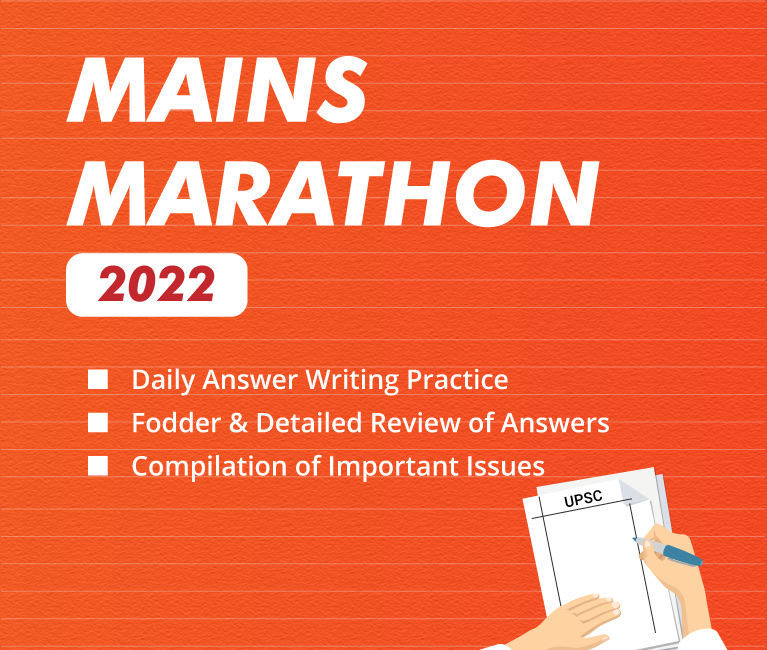
Governance
Swachh Bharat Mission Grameen
For Prelims: Swachh Bharat Mission Grameen, Open defecation Free Status, Gobar Dhan, Swachh Vidyalaya Abhiyan, Swaachha App, Bioremediation.
For Mains: Swachh Bharat Mission, Government Policies and Interventions
Why in News?
Over 1 lakh villages declared themselves as ODF (Open Defecation Free) Plus under Swachh Bharat Mission Grameen (SBM-G).
- These villages are sustaining their ODF status and have systems in place for managing solid and/or liquid waste and they would continue on their sanitation journey as they work towards making their villages cleaner, greener and healthier.
What is Open Defecation Free Status?
- ODF: An area can be notified or declared as ODF if at any point of the day, not even a single person is found defecating in the open.
- ODF+: This status is given if at any point of the day, not a single person is found defecating and/or urinating in the open, and all community and public toilets are functional and well maintained.
- ODF++: This status is given if the area is already ODF+ and the faecal sludge/septage and sewage are safely managed and treated, with no discharging or dumping of untreated faecal sludge and sewage into the open drains, water bodies or areas.
What is Swachh Bharat Mission Grameen (SBM-G)?
- About:
- It was launched in 2014 by the Ministry of Jal Shakti to accelerate the efforts to achieve universal sanitation coverage and to put focus on sanitation.
- The mission was implemented as nation-wide campaign/Janandolan which aimed at eliminating open defecation in rural areas.
- Swachh Bharat Mission (G) Phase-I:
- The rural sanitation coverage in the country at the time of launch of SBM (G) on 2nd October, 2014 was reported as 38.7%.
- More than 10 crore individual toilets have been constructed since the launch of the mission, as a result, rural areas in all the States have declared themselves ODF as on 2nd October, 2019.
- SBM(G) Phase-II:
- It emphasizes the sustainability of achievements under phase I and to provide adequate facilities for Solid/Liquid & plastic Waste Management (SLWM) in rural India.
- It will be implemented from 2020-21 to 2024-25 in a mission mode with a total outlay of Rs. 1,40,881 crores.
- The SLWM component of ODF Plus will be monitored on the basis of output-outcome indicators for 4 key areas:
- Plastic waste management,
- Biodegradable solid waste management (including animal waste management),
- Greywater (Household Wastewater) management
- Fecal sludge management.
- Top Performing States:
- The top five performing states are Telangana, Tamil Nadu, Odisha, Uttar Pradesh and Himachal Pradesh where maximum number of villages have been declared as ODF Plus.
What is the Significance of Swachh Bharat Mission?
- It will continue to generate employment and provide impetus to the rural economy through construction of household toilets and community toilets, as well as infrastructure for SLWM such as compost pits, soak pits, waste stabilisation ponds, material recovery facilities etc.
- It will also help rural India effectively handle the challenge of solid and liquid waste management and will help in substantial improvement in the health of the villagers in the country.
What are the Schemes as part of SBM?
- GOBAR-DHAN (Galvanizing Organic Bio-Agro Resources) Scheme: Launched by the Ministry of Jal Shakti in 2018 and aims to augment income of farmers by converting biodegradable waste into compressed biogas (CBG).
- Individual Household Latrines (IHHL): Individuals get around 15 thousand for the construction of toilets.
- Swachh Vidyalaya Abhiyan: The Ministry of Education launched the Swachh Vidyalaya Programme with an objective to provide separate toilets for boys and girls in all government schools within one year.
What is SBM-Urban?
- About:
- It was launched on 2nd October 2014 by the Ministry of Housing and Urban Affairs.
- Phase-I:
- About:
- The programme includes elimination of open defecation, conversion of unsanitary toilets to pour flush toilets, eradication of manual scavenging, municipal solid waste management and bringing about a behavioural change in people regarding healthy sanitation practices.
- Under the programme, community toilets will be built in residential areas where it is difficult to construct individual household toilets.
- Achievements:
- 4,324 urban local bodies have been declared Open Defecation Free, which has been made possible through the construction of more than 66 lakhs individual household toilets and over 6 lakhs community/public toilets, far exceeding the Mission’s targets.
- Digital enablements such as Swachhata App, the digital grievance redressal platform introduced by MoHUA in 2016, has reinvented the way in which citizen grievance redressal is managed.
- About:
- Phase-II:
- About:
- SBM-U 2.0, announced in Budget 2021-22, is the continuation of SBM-U first phase. The government is trying to tap safe containment, transportation, disposal of faecal sludge, and septage from toilets.
- It will be implemented over five years from 2021 to 2026 with an outlay of Rs.1.41 lakh crore.
- Objectives:
- It focuses on source segregation of garbage, reduction in single-use plastic and air pollution, by effectively managing waste from construction and demolition activities and bioremediation of all legacy dump sites.
- Under this mission, all wastewater will be treated properly before it is discharged into water bodies, and the government is trying to make maximum reuse a priority.
- About:
Way Forward
- With portable water supply, more greywater is being generated that needs to be treated and reused, and with lifestyle changes and the use of packaged food products, the menace of plastic waste is rearing its ugly head in rural areas and that needs to be managed effectively.
UPSC Civil Services Examination, Previous Year Questions (PYQs)
Q. “To ensure effective implementation of policies addressing the water, sanitation and hygiene needs the identification of the beneficiary segments is to be synchronized with anticipated outcomes.” Examine the statement in the context of the WASH scheme. (2017)
Q. How could social influence and persuasion contribute to the success of Swachh Bharat Abhiyan? (2016)


Science & Technology
India’s First Commercial SSA Observatory
For Prelims: Space Debris, Project NETRA, Clearspace-1, Space Situational Awareness (SSA)
For Mains: Space Situational Awareness (SSA), Space Debris, India as Space Power
Why in News?
India's first commercial Space Situational Awareness (SSA) Observatory will be set up in the Garhwal region of Uttarakhand.
- The observatory will be set up by Digantara, a Bengaluru-based space sector start-up.
What are the Key Points of the Observatory?
- The observatory will be the first-of-its-kind in the region, set up to augment the start-up’s SSA capabilities.
- It will be strategically positioned to serve global space traffic management operations.
- It will assist in tracking any activity in space including that of space debris and military satellites hovering over the region.
- At present, the US is a dominant player in monitoring space debris.
- The observatory will bring value to the nation by serving as an essential data source for advancing knowledge of the realm of space.
- It will be able to supplement its space-based sensors in their mission to monitor satellites and debris in orbits ranging from Low Earth Orbit (LEO) to Geosynchronous Earth Orbit (GEO).
What is Space Debris?
- Space debris consists of spent rocket stages, dead satellites, fragments of space objects resulting from Anti-satellite (ASAT) System (ASAT).
- Hurtling at an average speed of 27,000 kmph in Low Earth Orbit (LEO), these objects pose a very real threat as collisions involving even centimetre-sized fragments can be lethal to satellites.
- This free floating space debris is a potential hazard for operational satellites and colliding with them can leave the satellites dysfunctional.
- If there is too much space junk in orbit, it could result in a chain reaction where more and more objects will collide and create new space junk in the process, to the point where Earth's orbit becomes unusable – a Domino Effect.
What about India’s Current Scenario regarding SSA?
- About SSA:
- Space Situational Awareness (SSA) refers to keeping track of objects in orbit and predicting where they will be at any given time.
- It involves monitoring the movement of all objects — natural (meteors) and man-made (satellites) — and tracking space weather.
- SSA is generally understood as covering three main areas:
- Space Surveillance and Tracking (SST) of man-made objects.
- Space Weather (SWE) monitoring and forecast.
- Near-Earth Objects (NEO) monitoring (only natural space objects).
- India’s SSA Capability:
- At present, India uses a Multi Object Tracking Radar at Sriharikota range (Andhra Pradesh), but it has a limited range.
- Further, for SSA, India depends on data from NORAD (North American Aerospace Defence Command) and others available in the public domain.
- However, these platforms don’t provide accurate or comprehensive information.
- Nodal Agency:
- ISRO's efforts towards SSA is coordinated by the SSA Control Centre in Bengaluru and managed by the Directorate of Space Situational Awareness and Management at the ISRO headquarters.
- Related Initiatives:
- Project NETRA: ‘Project NETRA’ will be an early warning system in space to detect space debris and other hazards to Indian satellites.
- Once operational, it will give India its own capability in Space Situational Awareness (SSA) like the other space powers.
- Under this project, a space debris tracking radar with a range of 1,500 km and an optical telescope will be inducted
- Clearspace-1: At global level, this initiative of the European Space Agency, scheduled to launch in 2025, will be the first space mission to eliminate debris from orbit.
- Project NETRA: ‘Project NETRA’ will be an early warning system in space to detect space debris and other hazards to Indian satellites.
What is the Significance of the Upcoming SSA Observatory?
- Reduce Collision Rates:
- The observatory is designed with a capability to track objects as small as 10cm (in size). It would be able to reduce the potential for collisions between satellites and other spacecraft by making more accurate predictions of their location, speed, and trajectory
- Tracking and Identifying Pre-Existing RSOs:
- It would improve the effectiveness of tracking and identifying pre-existing Resident Space Objects (RSO).
- Enhancing Indigenous Capabilities:
- Promoting development of such critical technology and infrastructure is necessary towards building indigenous resilient capabilities and compete on a global stage.
- It will result in the creation of a hybrid data pool that will serve both the commercial and the defence sectors of the space industry.
- Supplement Global Networks:
- A data gap has been witnessed due to the lack of dedicated SSA sensors between Australia and southern Africa
- The observatory will play a vital role in monitoring space activities above the Indian subcontinent, relaying real-time data essential to safeguard the Indian assets.
- Global networks of SSA sensors will be supplemented by this observatory to offer constant tracking of objects over this part of the globe.
UPSC Civil Services Examination, Previous Year Questions (PYQs)
Prelims
Q. With reference to ‘Astrosat’, the astronomical observatory launched by India, which of the following statements is/are correct? (2016)
- Other than USA and Russia, India is the only country to have launched a similar observatory into space.
- Astrosat is a 2000 kg satellite placed in an orbit at 1650 km above the surface or the Earth.
Select the correct answer using the code given below:
(a) 1 only
(b) 2 only
(c) Both 1 and 2
(d) Neither 1 nor 2
Ans: (d)
- AstroSat is the first dedicated Indian astronomy mission aimed at studying celestial sources in X-ray, optical and UV spectral bands simultaneously.
- India is the 5th country to join space observatory elite list after the USA, Russia, Japan and Europe. Hence, statement 1 is not correct.
- AstroSat with a lift-off mass of about 1513 kg was launched into a 650 km orbit inclined at an angle of 6 degrees to the equator by PSLV-C30. Hence, statement 2 is not correct.
- Therefore, option (d) is the correct answer.
Mains
Q. What is India’s plan to have its own space station and how will it benefit our space programme? (2019)
Q. India has achieved remarkable successes in unmanned space missions including the Chandrayaan and Mars Orbiter Mission, but has not ventured into manned space mission. What are the main obstacles to launching a manned space mission, both in terms of technology and logistics? Examine critically. (2017)
Q. Discuss India’s achievements in the field of Space Science and Technology. How the application of this technology has helped India in its socio-economic development? (2016)

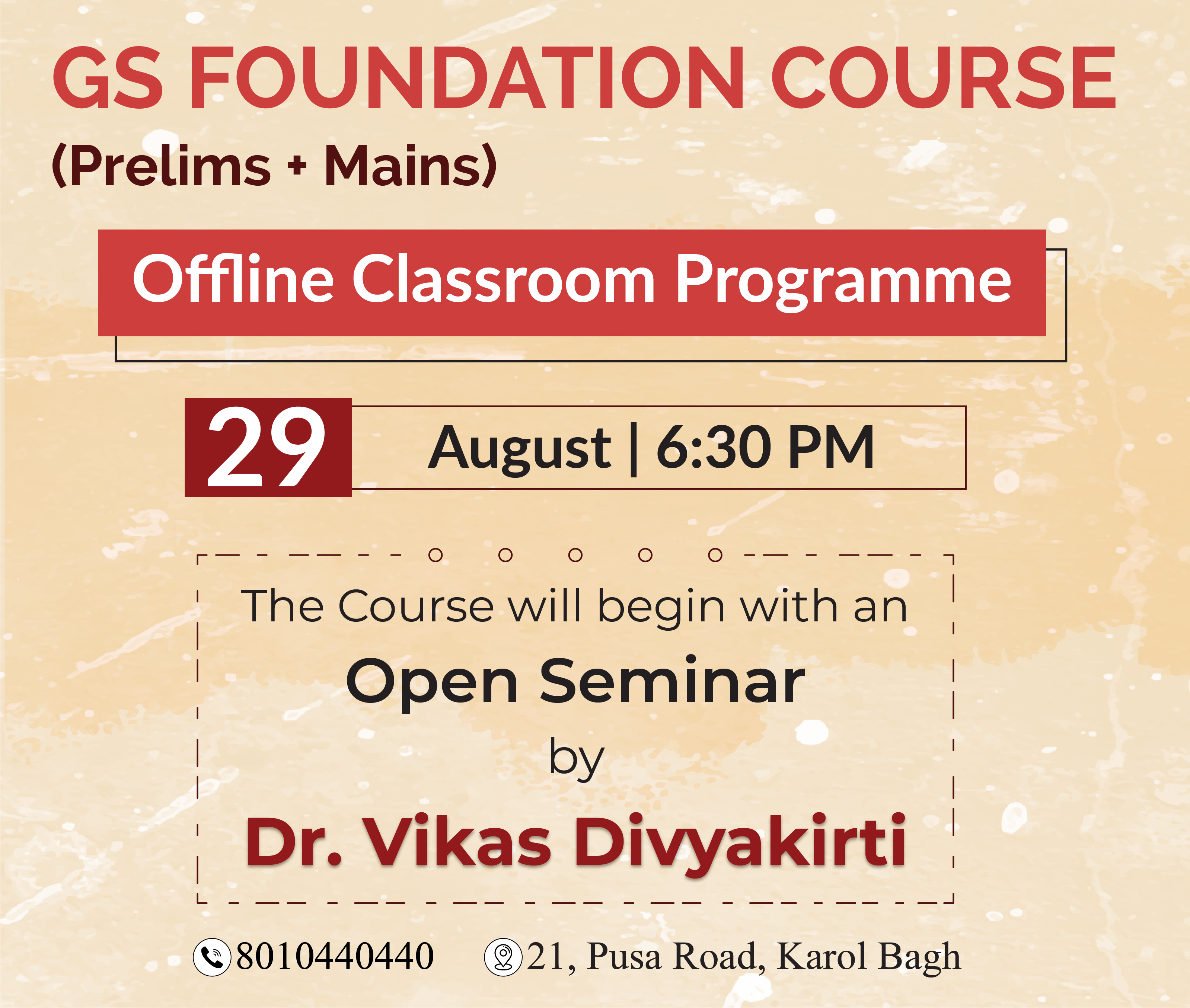
Ethics
Acculturation
For Prelims: Meaning of Acculturation
For Mains: Acculturation and its outcomes, Significance of Acculturation, India and Acculturation
Why in News?
India, with its distinctive fusion of various cultures, has ideals that provide a deeper understanding of the concept of acculturation and its outcomes.
What is Meant by Acculturation?
- The concept of acculturation was coined in 1880 by American geologist John Wesley Powel in a report for the U.S. Bureau of Ethnology.
- He defined it as the psychological changes induced in people due to cross-cultural imitation, resulting from the interaction with different cultures.
- Acculturation, in present days, is defined as the process in which a person or group from one culture comes in contact with another culture, adopting the values and practices of the other while still retaining their own distinct identity.
- A suitable example would be the integration of Black Americans within the white American society.
- Sociologists understand acculturation as a two-way process, wherein the minority culture adopts aspects of the majority to fit in and the culture of the majority is also influenced by that of the minority.
What are the Different Outcomes of Acculturation?
- Assimilation:
- A study by W.I. Thomas and Florian Znaniecki in 1918 on Polish immigrants in Chicago provided a better understanding of the concept of assimilation.
- It is a process in which groups adopt a new culture that virtually replaces their original culture, leaving only traces behind.
- In assimilation, individuals or groups eventually become indistinguishable from the culture they came in contact with.
- It occurs when the importance given to one's culture is minuscule and where ‘fitting in’ is given high significance, deeming it necessary for survival in a new cultural space.
- This outcome is likely to occur in societies that are "melting pots" into which new members are absorbed.
- Separation:
- It refers to the process wherein an individual/group comes in contact with a new cultural group, but does not embrace aspects of the new culture, as they wish to maintain their own unique identity without being ‘contaminated’ by the values and norms of another culture.
- The rejection of a new culture while maintaining one's own traditions and customs usually occurs in culturally or racially segregated societies.
- Integration:
- Under integration, an individual/group adapts to a new culture while maintaining their original culture. It occurs where cultural adoption is considered significant for the smooth functioning of society.
- Such a strategy is used in a multicultural society with a relatively high proportion of minority groups.
- Individuals or groups who use this strategy can switch between the values and norms of the different cultures they have absorbed to interact with groups from both cultures with ease.
- Marginalisation:
- It occurs when individuals/groups barely interact with a new cultural group.
- This strategy results in the isolation of the person or group, pushing them aside to the corners of society, forgotten by the rest.
- In a society where cultural exclusion is practised, it becomes almost impossible to interact and integrate with a different cultural group due to the barriers created between the two.
- Transmutation:
- It is the process in which importance is placed on both maintaining one’s own culture while also adopting aspects of a new culture.
- It is different from integration in the sense that the cultures are amalgamated into creating a new one (instead of integrating and switching between the codes and conducts of two different cultures).
- Thus, a unique blend of two cultures creates a new one that is accepted by both the individuals/groups.
How Relevant is Acculturation in India’s Context?
- India’s distinctive fusion of various cultures helps significantly in understanding the concept of acculturation and its outcomes.
- Persian culture has influenced almost all aspects of Indian society; the origins of popular food items like biriyanis and faloodas and spices like saffron, and cumin seeds trace back to Persian origins.
- The Urdu language, a blend of Arabic, Persian, Turkish and Hindi, is an example of the amalgamation and transmutation of cultures.
- The architectures of Christian Churches in Kerala like the Cheriapally (small church) in Kottayam or the Pazhaya Suriyani Pally (old Syrian church) in Chengannur have marks of Hindu Temple architectural styles.
- Sculptures of Christian deities inside a lotus similar to that of Hindu deities, and sculptures of animals like cows, elephants, and monkeys carved onto the church walls are excellent examples of the integration of Hindu and Christian traditions and cultures in Indian society.
Conclusion
- Acculturation is an inevitable social process, as migration and interactions with different cultures have always been part of the evolution of civilization.
- Acculturation allows us to learn and understand new aspects of various cultures and appreciate their differences.
- Resentment toward other cultures and the belief that one’s heritage is superior can result in the marginalisation and separation of different cultures, ultimately disrupting the functioning of a society.
- A harmonious exchange of cultures between various groups is imperative for a peaceful society.

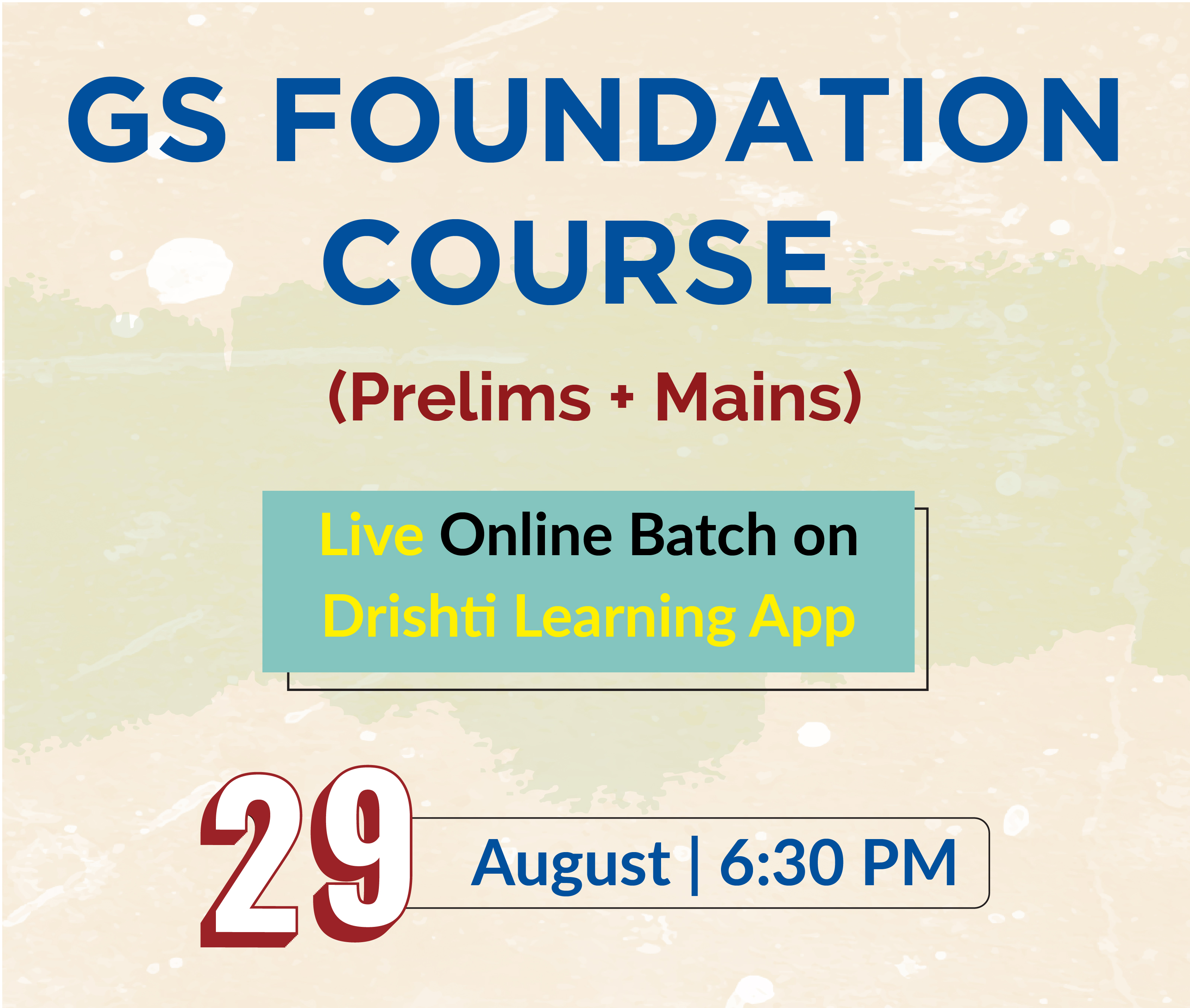
Indian Economy
Self Sufficiency in Urea
For Prelims: Liquid Nano Urea, Significance of Liquid Nano Urea over Conventional Urea
For Mains: Need of Self Sufficiency in Urea
Why in News?
India is hoping to end its reliance on imported urea within the next four years, till 2025 by expanding output of a locally developed version known as Liquid Nano Urea.
What is Liquid Nano Urea?
- It is urea in the form of a nanoparticle. It is a nutrient (liquid) to provide nitrogen to plants as an alternative to the conventional urea.
- Urea is a chemical nitrogen fertiliser, white in colour, which artificially provides nitrogen, a major nutrient required by plants.
- It is developed to replace conventional urea and it can curtail the requirement of the same by at least 50%.
- It contains 40,000 mg/L of nitrogen in a 500 ml bottle which is equivalent to the impact of nitrogen nutrient provided by one bag of conventional urea.
- It is Indigenous Urea, introduced firstly by the Indian Farmers Fertiliser Cooperative Limited (IFFCO) for farmers across the world.
- The first Liquid Nano Urea (LNU) plant is inaugurated at Kalol, Gujarat.
What is the Need of becoming Self Sufficient in Urea?
- India has been importing urea for decades to meet the shortfall in the supply chain. India, being one of the largest importers of urea, its demand affects the international price of urea.
- India is the world’s largest buyer of Urea and Di- Ammonium Phosphate (DAP).
- DAP is the second most commonly used fertilisers in India after urea.
- Farmers normally apply this fertiliser just before or at the beginning of sowing, as it is high in phosphorus (P) that stimulates root development.
- Urea and DAP have been hit by a sharp rise in global fertiliser prices this year 2022 due to supply disruptions.
- Agriculture being the mainstay of nearly 70 % of our population, any shortfall in supply or increase in the price of critical input like fertilisers is bound to have an adverse impact on the overall economic performance of our rural sector.
- It is likely that the demand for urea is not going to come down in the foreseeable future, so remaining dependent on the import of urea perpetually was a very bad idea from the onset.
- In this regard, the decision to set up several brownfield urea plants in the public sector in 2016 was a very good step.
- Self-sufficiency in urea will save the government nearly Rs 40,000 crore.
What is the Status of Fertilizers in India?
- About:
- India consumed about 500 LMT of fertilizer per year in the last 10 years.
- The Centre's fertiliser subsidy bill is set to soar by 62% over the budgeted amount to Rs 1.3 lakh crore in FY21.
- Since non-urea (MoP, DAP, complex) varieties cost higher, many farmers prefer to use more urea than actually needed.
- The government has taken a number of measures to reduce urea consumption. It introduced neem-coated urea to reduce illegal diversion of urea for non-agricultural uses. It also stepped up the promotion of organic and zero-budget farming.
- Between 2018-19 and 2020-21, India’s fertiliser imports increased almost 8% to 20.33 million tonnes from 18.84 million tonnes.
- In FY21, more than a fourth of the urea requirement was imported.
- Need of Large Quantities of Fertilisers:
- The agricultural output of India has increased every year, and the country's need for fertilisers has also increased.
- Despite imports, gaps remain between requirements and availability after indigenous production targets haven't been met.
What are the Related Government Initiatives?
- Nano Urea Production:
- Eight new nano urea plants, which are being centrally monitored, will start production by November 2025.
- These are located in several states, including Karnataka, Uttar Pradesh and Assam.
- Neem Coating of Urea:
- The Department of Fertilizers (DoF) has made it mandatory for all the domestic producers to produce 100% urea as Neem Coated Urea (NCU), to Improve soil health, Reduce usage of plant protection chemicals etc.
- New Urea Policy (NUP) 2015:
- Objectives of the policy are,
- To maximize indigenous urea production.
- To promote energy efficiency in the urea units.
- To rationalize the subsidy burden on the Government of India.
- Objectives of the policy are,
- New Investment Policy- 2012:
- The Government announced New Investment Policy (NIP)-2012 in January, 2013 and made amendments in 2014 to facilitate fresh investment in the urea sector and to make India self-sufficient in the urea sector.
- Policy on Promotion of City Compost:
- The Government of India approved a policy on promotion of City Compost, notified by the DoF in 2016 granting Market Development Assistance of Rs. 1500/- for scaling up production and consumption of city compost.
- Use of Space Technology in Fertilizer Sector:
- DoF commissioned a three year Pilot Study on “Resource Mapping of Rock Phosphate using Reflectance Spectroscopy and Earth Observations Data” by National Remote Sensing Centre under ISRO, in collaboration with Geological Survey of India (GSI) and the Atomic Mineral Directorate (AMD).
- The Nutrient Based Subsidy (NBS) Scheme:
- It has been implemented from April 2010 by the Ministry of Chemicals and Fertilizers' Department of Fertilizers.
- Under NBS, a fixed amount of subsidy decided on an annual basis, is provided on each grade of subsidized Phosphatic & Potassic (P&K) fertilizers depending on its nutrient content.
Way Forward
- For non-urea fertilisers like DAP and Muriate of Potash (MOP), we need to take significant steps to ensure that our farmers keep getting an uninterrupted supply of required fertilisers at reasonable prices, although for the raw material of these non-urea fertilisers we have remained dependent on imports.
- The need of the hour is to streamline the subsidy distribution mechanism by universalising the Direct Benefit Transfer (DBT) in the fertiliser sector.
- Secondly, corruption prevalent in the fertiliser subsidy distribution regime needs to be curbed stringently. These steps will reduce the burden of fertiliser subsidy substantially. The only thing needed is the will to act.
UPSC Civil Services Examination, Previous Year Questions (PYQs)
Prelims
Q. With reference to chemical fertilizers in India, consider the following statements: (2020)
- At present, the retail price of chemical fertilizers is market-driven and not administered by the Government.
- Ammonia, which is an input of urea, is produced from natural gas.
- Sulphur, which is a raw material for phosphoric acid fertilizer, is a by-product of oil refineries.
Which of the statements given above is/are correct?
(a) 1 only
(b) 2 and 3 only
(c) 2 only
(d) 1, 2 and 3
Ans: (b)
Exp:
- The Government of India subsidizes fertilizers to ensure that fertilizers are easily available to farmers and the country remains self-sufficient in agriculture production. The same has been achieved largely by controlling the price of fertilizer and the amount of production. Hence, statement 1 is not correct.
- Ammonia (NH3) has been synthesized from natural gas. In this process, natural gas molecules are reduced to carbon and hydrogen. The hydrogen is then purified and reacted with nitrogen to produce ammonia. This synthetic ammonia is used as fertilizer, either directly as ammonia or indirectly after synthesis as urea, ammonium nitrate, and monoammonium or diammonium phosphates. Hence, statement 2 is correct.
- Sulfur is a major by-product of oil refining and gas processing. Sulfuric acid is used in the production of both Monoammonium Phosphate (MAP) and Diammonium Phosphate (DAP). Hence, statement 3 is correct.
- Therefore, option (b) is the correct answer.
Q. In the ‘Index of Eight Core Industries’, which one of the following is given the highest weight? (2015)
(a) Coal production
(b) Electricity generation
(c) Fertilizer production
(d) Steel production
Ans: (b)
Exp:
- In 2015, Electricity was having the highest weightagein the index of 8 core industries.
- The Eight Core Industries comprise 40.27% of the weight of items included in the Index of Industrial Production (IIP).
- The current weight (April 2021), of eight core industries is given below:
- Petroleum Refinery production (28.04%), Electricity (19.85%), Steel (17.92%), Coal production (10.33%), Crude Oil (8.98%), Natural Gas production (6.88%), Cement production (5.37%), Fertilizer production (2.63%).
- Index of Industrial Production
- The Index of Industrial Production (IIP) is an index which details out the growth of various sectors in an economy such as mineral mining, electricity, manufacturing, etc.
- It is compiled and published monthly by the Central Statistical Organisation (CSO), Ministry of Statistics and Programme Implementation six weeks after the reference month ends, i.e., a lag of six weeks.
- The Base Year of the Index of Eight Core Industries has been revised from the year 2004-05 to 2011-12 from April, 2017.
- Therefore, option (b) is the correct answer.
Mains
Q. How do subsidies affect the cropping pattern, crop diversity and economy of farmers? What is the significance of crop insurance, minimum support price and food processing for small and marginal farmers? (2017)


Science & Technology
Dust Formation in Novae Ejecta
For Prelims: Cosmic Dust, Novae, White Dwarf, Space Technology, Space-Dust Collisions
For Mains: Origin of Universe and Significance of Space Discoveries
Why in News?
Scientists from SN Bose Centre for Basic Science (SNBCBS) observed the imploding novae called Nova V1280 Scorpii and found that a thick dust formed around it after a month and lasted for about 250 days.
What is Novae?
- A nova is an astronomical event in which a strong explosion occurs temporarily on the stellar (Pertaining to Stars) surface, increasing the brightness by hundreds to millions of times, then slowly darkening over weeks or months.
- It occurs in a binary system consisting of a white dwarf and a main sequence star.
- A binary star system occurs when two stars both orbit around a common center of mass.
- The brighter star is officially classified as the primary star, while the dimmer of the two is the secondary.
- White dwarfs are stars that have burned up all of the hydrogen they once used as nuclear fuel.
- Such stars have very high density. A typical white dwarf is half the size of our Sun and has a surface gravity 1,00,000 times that of Earth.
- A binary star system occurs when two stars both orbit around a common center of mass.
What is Cosmic Dust?
- Cosmic dust consists of tiny particles of solid material floating around in the space between the stars.
- Cosmic dust or extra-terrestrial dust formation in the hostile environment of novae ejection has been an open question for many years. Hundreds of kilograms of such dust fall on the Earth every day.
What are the Findings?
- Scientists constructed simple models to estimate parameters of dust like hydrogen density, temperature, luminosity and elemental abundances during pre- and post-dust phase.
- High abundance of certain elements like carbon, nitrogen and oxygen was found along with a mixture of small amorphous carbon dust grains and large astrophysical silicate dust grains.
- Dust formation in novae ejecta is not a common phenomenon.
- It has been observed only in a few novae within 30 to 100 days after an outburst, as compared to interstellar dust, which typically takes a few thousand years to form and hence provided opportunity to study the dust formation process in novae.
- High abundance of isotopes of certain elements like carbon, nitrogen and oxygen was found in the predust phase.
- A mixture of small amorphous carbon dust grains and large astrophysical silicate dust grains present in the ejecta was found in the post dust phase.
- Some complex organic compounds like amorphous organic solids with a mixed aromatic–aliphatic structure was found which play an important role in formation of molecular clouds in stars and planets.
What is the Significance of the Study?
- Such Space-dust collisions may have propelled organisms over enormous distances between planets to start life on a planet.
- Their study of novae dust could help in understanding the nature and characteristics of the dust and associated processes.
- The team has suggested that as the expanding dust shell of V1280 Scorpii Nova continues to expand these dust grains will eventually mix with interstellar matter. But that will take thousands of years - a small time in the cosmic time scale.
UPSC Civil Services Examination, Previous Year Questions (PYQs)
Q. Who of the following scientists proved that the stars with mass less than 1.44 times the mass of the Sun end up as White Dwarfs when they die? (2009)
(a) Edwin Hubble
(b) S. Chandrashekhar
(c) Stephen Hawking
(d) Steven Weinberg
Ans: (b)
Exp:
- S. Chandrasekhar was an Indian American astrophysicist famous for his work on the structure and evolution of stars. He received the Nobel Prize for Physics in 1983, jointly with William A. Fowler.
- Chandrasekhar is well-known for his calculation of the ‘Chandrasekhar Limit’, a theoretical limit on the mass of the White Dwarf Stars, which is approximately 1.44 solar masses. Those with masses under the Chandrashekhar limit exist as White Dwarf, while those above are subject to further gravitational collapse. Chandrasekhar showed it using Albert Einstein’s Special Theory of Relativity and the Principles of Quantum Physics.
- In 1979, NASA named the third of its four “Great Observatories” after Chandrasekhar. The Chandra X-ray Observatory was launched and deployed by Space Shuttle Columbia on 23 July 1999. The asteroid, 1958 Chandra is also named after Chandrasekhar.
- A White Dwarf is what stars like the Sun become after they have exhausted their nuclear fuel. Near the end of its nuclear burning stage, this type of star expels most of its outer material, creating a planetary Nebula.
- Therefore, option (b) is the correct answer.

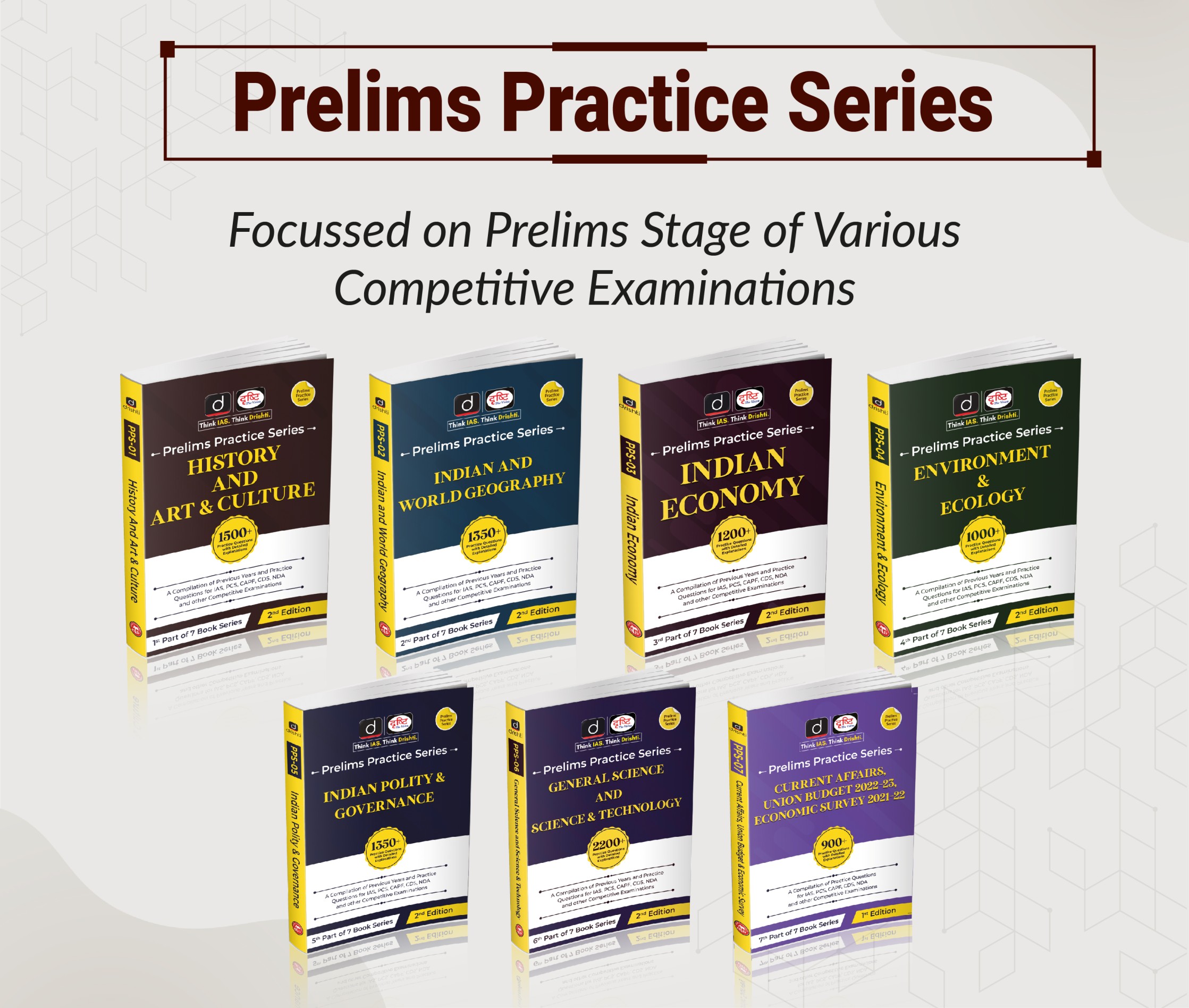
Important Facts For Prelims
African Rhinoceros
Why in News?
Recently, a report has stated that Rhino poaching rates in Africa declined to 2.3% in 2021 from 3.9% in 2018.
- At least 2,707 rhinos were poached in Africa between 2018 and 2021, including critically endangered black rhino and near threatened white rhino.
What do we need to know about the Report?
- About:
- The report was compiled by the International Union for Conservation of Nature (IUCN), Species Survival Commission (SSC), African and Asian Rhino Specialist Group (AfRSG) and TRAFFIC.
- African Rhino Specialist Group (AfRSG) gathered information from thirteen rhino range countries:
- Botswana, Chad, Eswatini, Kenya, Malawi, Mozambique, Namibia, Rwanda, South Africa, Tanzania, Uganda, Zambia and Zimbabwe.
- Findings of the Report:
- Rhinoceros poaching rates in Africa have declined from a peak of 5.3% of the total population in 2015 to 2.3% in 2021.
- South Africa accounted for 90% of all reported cases, predominantly affecting white rhinos in Kruger National Park.
- South Africa lost 394 rhinos to poaching in 2020, while Kenya didn’t record any poaching that year.
- Rhinos in Africa:
- The total estimate of rhinos in Africa was 22,137 at the end of 2021.
- There has been an increase in poaching in private properties.
- A total of 451 rhinos were poached in South Africa in 2021:
- 327 within government reserves and 124 on private properties.
- A total of 451 rhinos were poached in South Africa in 2021:
- The number of white rhinos in the continent declined by almost 11.8% during 2015-18, while populations of black rhinos increased by just over 12.2%.
- Zimbabwe conserves the largest population of African Rhinoceroses among the four range countries in Africa namely South Africa, Namibia, Kenya and Zimbabwe.
What are the Key Points related to Black Rhino & White Rhino?
- Black Rhino:

- About:
- Black rhinos are the smaller of the two African Rhino species.
- The most notable difference between white and black rhinos is their hooked upper lip.
- While White Rhino has a square lip.
- Black rhinos are browsers rather than grazers, and their pointed lip helps them feed on leaves from bushes and trees.
- They have two horns, and occasionally a third, small posterior horn.
- Scientific Name:
- Diceros bicornis
- Habitat:
- Semi-Desert Savannah, Woodlands, Forests, Wetlands.
- Protection Status:
- IUCN Red List: Critically Endangered
- CITES: Appendix I
- Wildlife Protection Act 1972: N/A
- About:
- White Rhino:
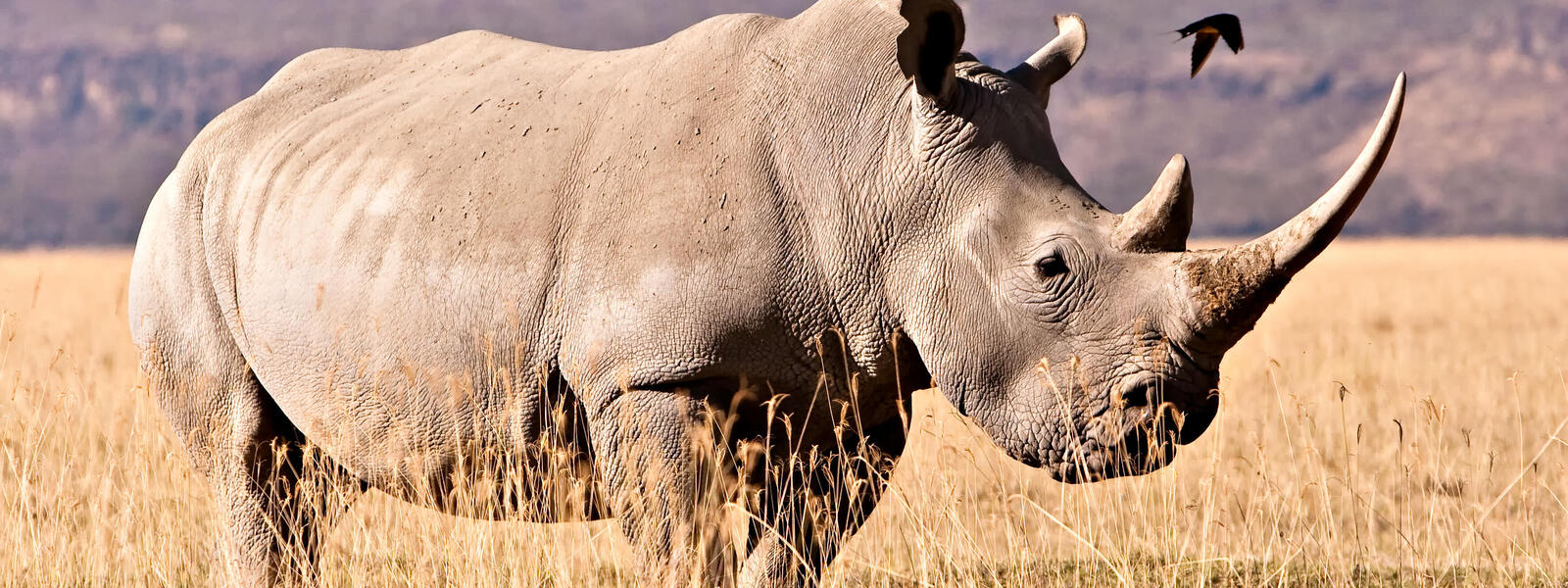
- About:
- White rhinos are the second largest land mammal after the elephant.
- White rhinos are also known as the square-lipped rhinoceros due to their square (not pointed) upper lip.
- Two genetically different subspecies exist, the northern and southern white rhino and are found in two different regions in Africa.
- Scientific Name:
- Ceratotherium simum
- Habitat:
- Long and short grass savanna areas in grasslands.
- Protection Status:
- IUCN Red List: Near Threatened
- CITES: Appendix I & Appendix II
- Wildlife Protection Act 1972: N/A
- About:
What are Some Other Types of Rhinos?
- Greater One Horned Rhino:
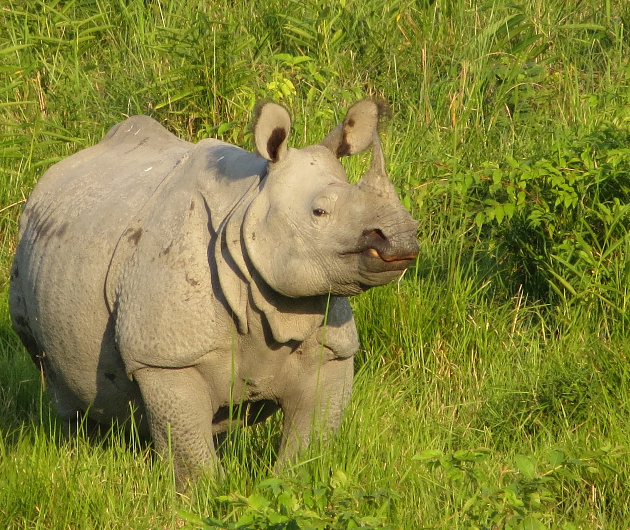
- About:
- Asia's largest species of rhino, also known as the Indian rhino.
- Scientific Name:
- Rhinoceros unicornis
- IUCN Status:
- Vulnerable
- Habitat:
- Tropical grassland, shrublands, savanna
- Distribution:
- India and Nepal
- About:
- Sumatran Rhino:
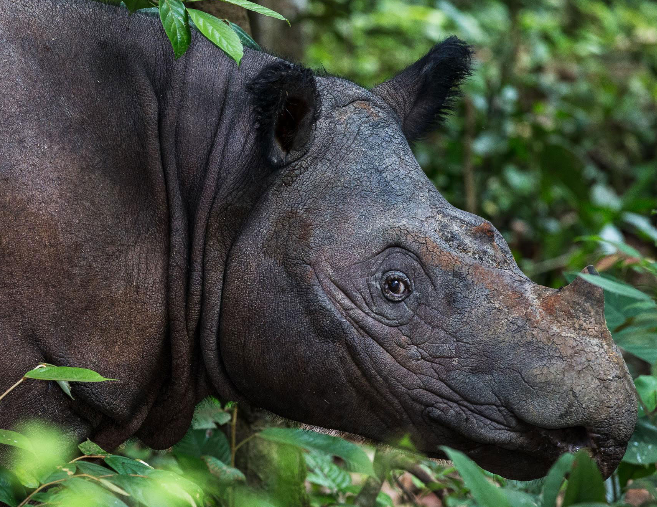
- About:
- Closest living relative to the woolly rhinos. Only species to still be covered in hair.
- Scientific Name:
- Dicerorhinus sumatrensis
- IUCN Status:
- Critically Endangered
- Habitat:
- Tropical and subtropical forests
- Distribution:
- Sumatra, Sabah
- About:
- Javan Rhino:
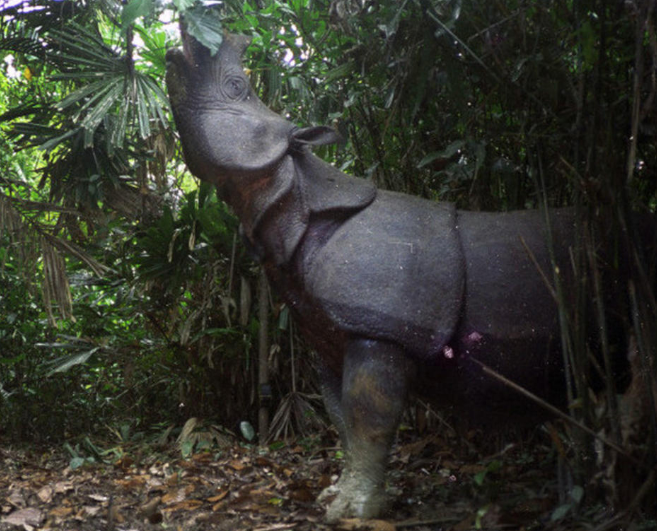
- About:
- All Javan rhinos in the world survive in Ujong Kulon National Park.
- Scientific Name:
- Rhinoceros sondaicus
- IUCN Status:
- Critically Endangered
- Habitat:
- Tropical and subtropical forests
- Distribution:
- Sumatra, Sabah
- About:
UPSC Civil Services Examination, Previous Year Questions (PYQs)
Q. Consider the following statements: (2019)
- Asiatic lion is naturally found in India only.
- Double-humped camel is naturally found in India only.
- One-horned rhinoceros is naturally found in India only.
Which of the statements given above is/are correct?
(a) 1 only
(b) 2 only
(c) 1 and 3 only
(d) 1, 2 and 3
Ans: (a)
Explanation:
- Asiatic lions were once found in regions ranging from Persia (Iran) to Eastern India. By late 1890s range of Asiatic lions got restricted to the Gir forest range of Gujarat, India. With the continuous efforts of State and Union Government, the population of Asiatic lions increased from 523 in 2015 to 674 in 2020. Hence, statement 1 is correct.
- The double-humped camel is a native of the Gobi desert and is found on a vast expanse of cold-desert areas across Mongolia, China, Kazakhstan, Turkmenistan, Uzbekistan and parts of Afghanistan. Hence, statement 2 is not correct.
- The one horned rhinoceros are found in North- Eastern India and the Terai grasslands of Nepal. Hence, statement 3 is not correct.
- Therefore, option (a) is the correct answer.


Important Facts For Prelims
Supply Chain Ministerial Forum
Why in News?
Recently, US State Department released a Joint Statement of the 2022 Supply Chain Ministerial Forum, focusing on the global challenge which includes - the COVID-19 pandemic, wars and conflicts and climate change.
What do we need to know about the Forum?
- About:
- On July 2022, United States hosted the Supply Chain Ministerial Forum to advance work to reduce and end near-term supply chain disruptions and collaborate to build supply chain resiliency to avoid future disruptions.
- Objective:
- Resilient Supply Chain:
- Building collective long-term resilient supply chains based on international partnerships.
- Partner countries aim to follow various global supply chain principles including transparency, diversification, security and sustainability.
- Building collective long-term resilient supply chains based on international partnerships.
- Transparency:
- Promote transparency in consultation with the private sector, civil society, different levels of government, and other relevant stakeholders, consistent with participants' domestic laws and international obligations, in order to strengthen the resilience of supply chains.
- Diversification & Global Capacity:
- Promote diversification and increase global capacities for multiple, reliable, and sustainable sources of materials and inputs, intermediate goods, and finished goods in priority sectors, along with logistics infrastructure capacities, increasing the resilience of supply chains to make our economies less vulnerable to disruptions and shocks.
- Sustainability:
- Encourage global sustainability and responsible business conduct across supply chains, as well as objectives set out in relevant multilateral environmental agreements to which we are parties, including the United Nations Framework Convention on Climate Change (UNFCCC) and the Paris Agreement.
- Resilient Supply Chain:
- Partner Economies:
- Australia, Brazil, Canada, the Democratic Republic of the Congo, the European Union, France, Germany, India, Indonesia, Italy, Japan, Mexico, the Netherlands, the Republic of Korea, Singapore, Spain, the United Kingdom, and the United States.
What is India’s related Supply Resilience Initiative?
- SCRI:
- Supply Chain Resilience Initiative between India, Japan and Australia, launched in 2021.
- It aims to create a virtuous cycle of enhancing supply chain resilience with a view to eventually attaining strong, sustainable, balanced and inclusive growth in the Indo-Pacific region.
- Supply Chain Resilience Initiative between India, Japan and Australia, launched in 2021.
UPSC Civil Services Examination, Previous Year Questions (PYQs)
Mains
Q. Quadrilateral Security Dialogue (Quad) is transforming itself into a trade bloc from a military alliance, in present times Discuss. (2020)


Important Facts For Prelims
Universal Postal Union
Why in News?
Recently, The Union Cabinet approved the ratification of amendments to the Constitution of the Universal Postal Union (UPU) as contained in the Eleventh Additional Protocol to the Constitution signed during the 27th Congress of the Universal Postal Union held at Abidjan 2021.
What is the Significance of the Approval?
- It would enable the Department of Posts, Government of India to have the “Instrument of Ratification” signed by the Hon’ble President of India and have the same deposited with the Director General of the International Bureau of the Universal Postal Union.
- Further, it would fulfill the obligations arising from Articles 25 and 30 of the UPU Constitution which provides for ratification of the amendments to the Constitution adopted by a Congress as soon as possible by the member countries.
- It would resolve many long-standing discrepancies in the text and accommodate provisions for ‘acceptance or approval of the Acts in consistency with the Vienna Conventions on Law of Treaties, 1969.
- Vienna Convention on the Law of Treaties, an international agreement governing treaties between states that was drafted by the International Law Commission of the United Nations and adopted on May 23, 1969, and that entered into force on January 27, 1980.
What is Universal Postal Union?
- The UPU was established by the Treaty of Bern of 1874.
- It is a specialized agency of the United Nations (UN) that coordinates postal policies among member nations, in addition to the worldwide postal system.
- It is the second oldest international organization worldwide.
- UPU’s headquarters are located in Bern, Switzerland.
- The UPU contains four bodies consisting of
- The Congress.
- The Council of Administration (CA).
- The Postal Operations Council (POC) and
- The International Bureau (IB).
- It also oversees the Telematics and Express Mail Service (EMS) cooperatives.
- Any member country of the United Nations may become a member of the UPU.
- Any non-member country of the United Nations may become a UPU member provided that its request is approved by at least two-thirds of the member countries of the UPU.
- With its 192 member countries, the organization fulfills an advisory, mediating, and liaison role, and provides technical assistance where needed.
- The union sets the rules for international mail exchanges and makes recommendations to stimulate growth in mail, parcel, and financial services volumes and improve the quality of service for customers.
- India joined the UPU in 1876.








